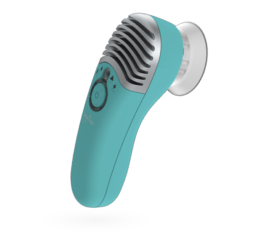Shedding New Light on LLLT (aka Photobiomodulation)
When it comes to laser therapy, bigger is not always better. Recent research has shown that, in certain situations, high-power lasers did not increase efficacy. This same study also showed the one thing that did increase efficacy.
One of the observations that have consistently been made in the course of fifty years of investigation of photobiomodulation (PBM) or low-level laser therapy (see: Biphasic dose response in low-level light therapy), is known as the “biphasic dose-response curve” also known as “hormesis.” This concept describes the existence of a maximum dose of light to get the maximum effect of whatever is being measured in any experimental or clinical situation. If the dose is exceeded beyond this number, the benefit obtained gradually decreases until it disappears, and there is even the possibility of harmful effects being observed at extremely high doses.
How should the dose be measured? Most scientists and researchers use energy density (J/cm2), while others use power density (mW/cm2) or even total energy (J). Moreover, there is some evidence that the number of repetitions (i.e. days in a row) can also have a maximum beneficial number (e.g., 3 or 7) rather than 14 or more.
The majority of the published studies that have reported biphasic dose-response results have used in vitro cell cultures, and the values of the maximum dose of energy density have varied widely depending on the cell type, wavelength, and what exactly is being measured. For cells that are highly responsive to light (brain cells, muscle cells, nerve cells), the dose is lower than for cells that are less responsive to light (skin cells, tendon cells, cartilage cells). There are some studies in animals also showing the biphasic dose-response effect exists but at present only a few studies in human patients.
What does this concept mean to the veterinarian who is using photobiomodulation to treat an animal in his or her care? Different individual subjects (even of the same species) may respond differently to light. Therefore it is recommended to start off gradually until the responsiveness of the subject is clear. Since most conditions will require several successive treatments, it should become evident relatively early on if the subject is responding well or not.
If no response is seen then it is reasonable to increase the dose, even up to five times the initial dose. The most likely sign of an excessive dose is increased inflammation, instead of decreased inflammation, and perhaps agitation. Even if too high a dose has inadvertently been used, no permanent damage will have been done.
Dr. Michael R. Hamblin
Chief Science Officer
MedcoVet

Luma
At MedcoVet, we aim to make light therapy available and affordable to anyone that needs it. So, we would like anyone interested, curious, practiced or skeptical to join our community and the discussion.

